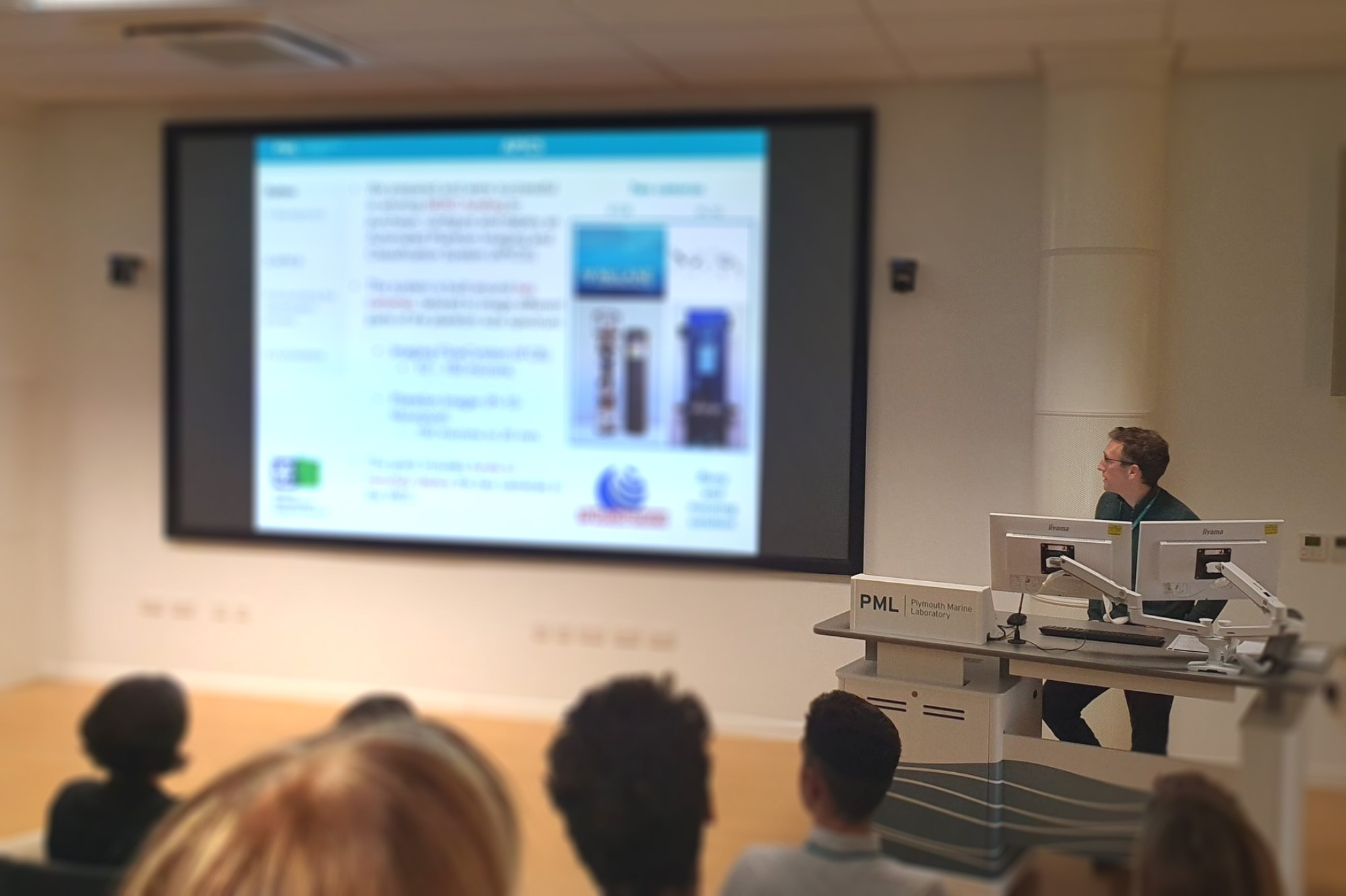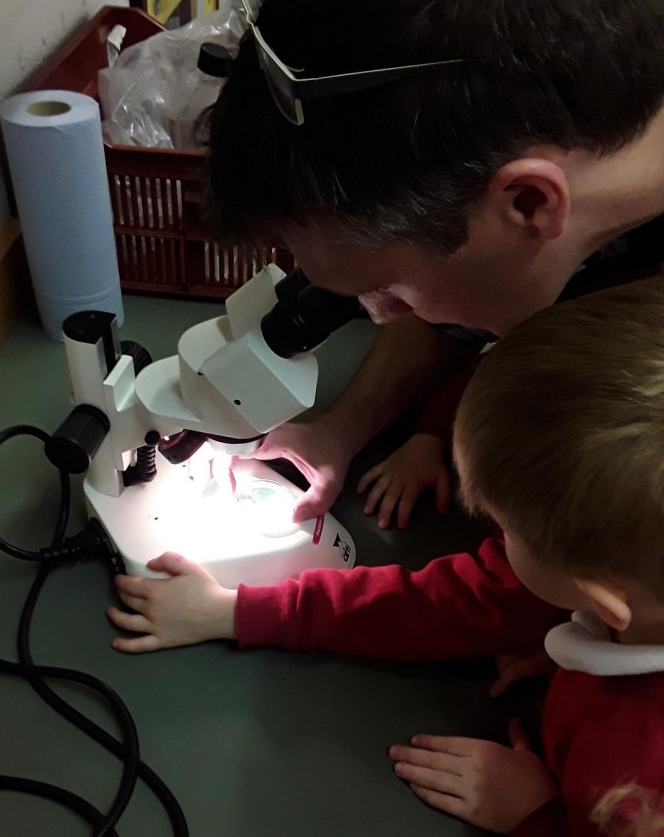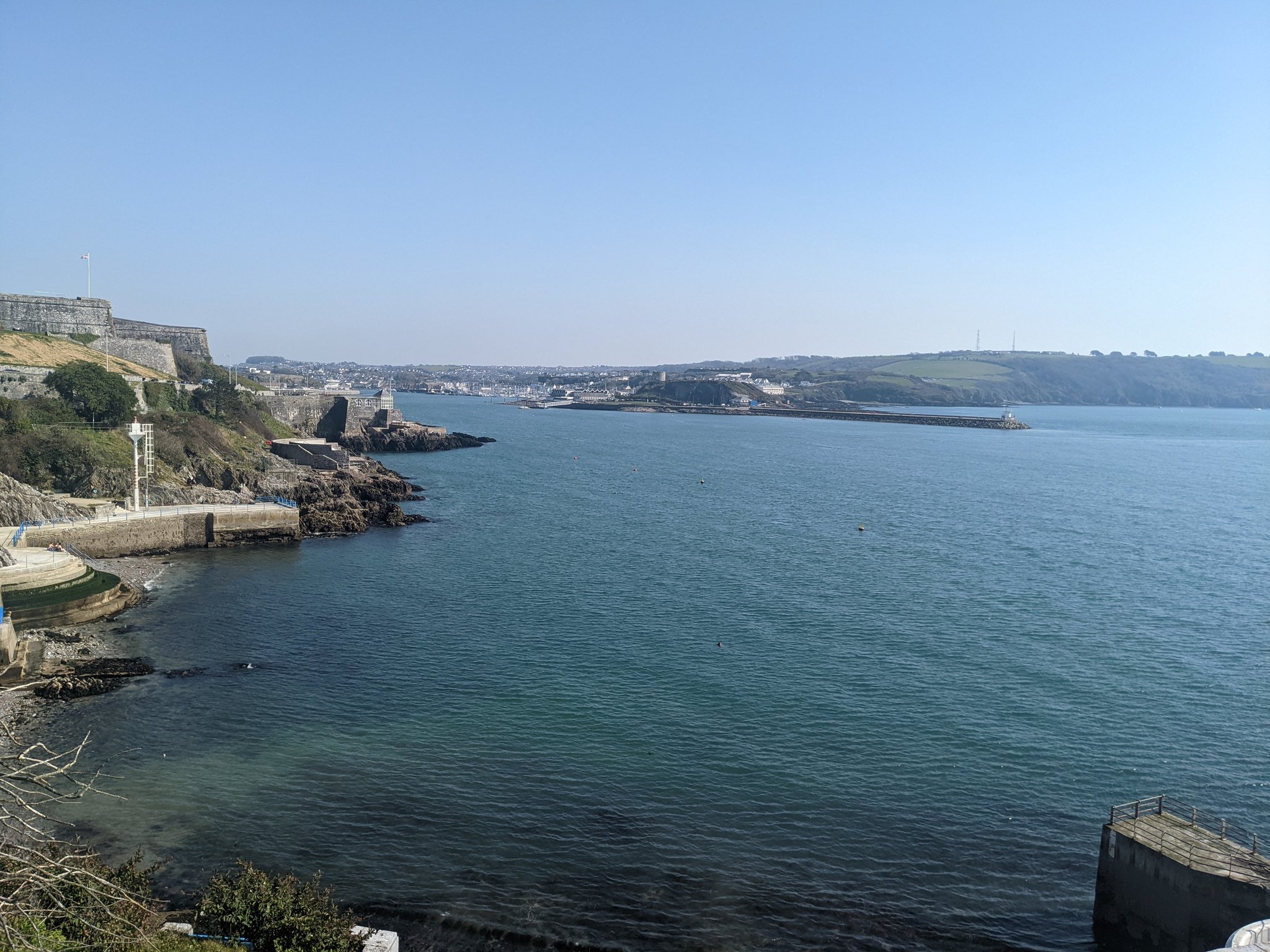Story
Staff spotlight: Dr James Clark – Marine Ecosystem Modeller
15 June 2023

We’ve gone full circle with our Staff Spotlights this week to uncover some of the work involved in the Western Channel Observatory (WCO)! From analysing the plankton samples taken from the WCO under the microscope with Claire Widdicombe, to monitoring the Western English Channel from above using satellites with Dr Gavin Tilstone, and now Dr James Clark has kindly taken some time to tell us about how data collection from the WCO informs computer modelling.
We started our questions to get to know more about James and his background. We first asked James to tell us the inspiration behind his move from completing a Master’s Degree in Astrophysics, to then completing a PhD in Environmental Studies.
“After completing my Master’s degree, I took the opportunity to see the world and think about my next steps. I concluded that I wanted to be a researcher, and to study for a PhD. I was pulled toward Environmental Science as it provided an opportunity to work across the traditional sciences of Physics, Biology and Chemistry. I have always had an interest in Biology, but at the time I could not see an obvious way of incorporating this into a Physics-based PhD.”
“I was also attracted by the deceptively simple questions that were and are being worked on in environmental science, such as “When you burn a lump of coal, what happens to the carbon that it contains?”. It’s the type of question that is easy to explain to family members. It also has important societal implications. However, it is also difficult to answer, since it forces one to think about how that carbon is partitioned between the atmosphere, the land and the ocean. Many of the current, cutting-edge questions in physics are not so easily explained to family members! I should add that when applying for a PhD, I did not set out to become an Ecosystem Modeller! However, the skills one learns when studying physics provide a good grounding for such a role, and I feel lucky that my PhD Supervisors gave me the opportunity to start down this path.”

Above: Dr James Clark "doing science" with Foundation year children at Chudleigh CE VC Community Primary School, he says "The next generation of Marine Scientists in the making".
We next asked James – or more affectionately known here at PML as “Jim” - if he could describe his role as an Ecosystem Modeller and what it involves.
“It’s a mixture of project leadership and doing science. The latter mostly involves developing models, writing software and analysing data. I particularly like how varied my role is, and the fact PML has also encouraged me to follow my interests.”
And he has a lot of interests! James’ research interests span a range of topics, including evolutionary adaptation and acclimation in phytoplankton, marine ecology, marine biogeochemistry, marine pollution and machine learning for automatic plankton identification.
Over the past decade, he has also actively contributed to projects based around using particle tracking models to study ocean connectivity. He is the lead developer of the particle tracking model PyLag, which he has used to study the fate of plastic, seaweed detritus and sediments in the ocean.
James joined PML back in 2013, and we wished him a happy 10-year anniversary! We have certainly been lucky to keep him all of this time. We followed this to ask James whether he could tell us about any career highlights, or special moments during his time with us.
“Thank you! There have been several highlights, and many good memories. My work on plastic pollution has been a key highlight during my time at PML. I have been involved in several scientific papers on the subject, with several more in preparation. I have also enjoyed meeting researchers from around the world with a shared interest in the subject.”
“More recently, I have been excited by our new project on Automated Plankton Imaging and Classification (APICS)! It is something of a deviation from the day job, but I believe it has the potential to create an exciting new dataset that we can learn from.”
Above: The APICS project team unboxing the new Imaging FlowCytobot. From left to right: Dr James Clark, Dr James Fishwick, Claire Widdicombe and Elaine Fileman.
James is our project lead for APICS, which utilises AI technology that will be deployed at our L4 coastal station, autonomously collecting images of plankton in situ, before classifying them and sharing the data straight to the lab. The data collection forms part of our work in the Western Channel Observatory.
This led us nicely into our next few questions, where we asked James about what he does with the data collected from the WCO.
“The WCO data has so many uses, which is reflected in the number of scientific publications it has supported. To name one, within the Marine Systems Modelling Group at PML, we regularly use the WCO data to validate our models. It helps us to say whether our models have skill or not. If they fail to reproduce the observations, we are forced to ask why. This often requires us to revisit our thinking about how a particular process works at a conceptual level.”
We next asked about how APICS all began, how it came about, and if he could tell us a little more about the project and his role in it.
“The project grew out of work on automated plankton classification, which I initiated with Claire Widdicombe and Elaine Fileman at PML. We began by working with images of plankton collected using a desk-based imaging device. The obvious next step was to move to working with automated cameras, deployed in situ in the marine environment. We applied for funding from the Natural Environment Research Council (NERC) to work on this and were successful. The project kicked off in June 2022.”
“APICS will enable an up to 100-fold improvement in the frequency at which we collect data on plankton community composition within the English Channel. This will allow us to study short-period dynamics that we have never been able to study before. My hope is the project will help us to better understand plankton community dynamics, which is important for many other areas of research.”
Given recent advancements in technology, like those used in the APICS project, we next asked James how he envisaged the future of modelling.
“I think the question for the modelling community is how does it best exploit the data being produced by these new enabling technologies? I am involved in another exciting project called NECCTON, where some of these questions are being worked on in the context of the Copernicus Marine Service.”
James does indeed work across many exciting projects. He is currently the PML Principle Investigator (PI) and Work Package 5 Lead for NECCTON (Horizon Europe New Copernicus Capability for Trophic Ocean Networks. Previously, he was the PI for the Copernicus Climate Change Marine, Coastal and Fisheries Sectoral Information System project (2018 – 2019).
It has been a delight to hear more about James and his work in the Marine Systems Modelling group. We based our next couple of questions around what James likes to do away from work, to get to know the man behind the modelling. We first asked him what he enjoys about living and working in Plymouth.
“For me, PML has a brilliant mix of scientists with very different backgrounds. It is also small enough that it is possible to know all (or most) of the people who work there. This facilitates collaborative, interdisciplinary working across science areas, and is one of the things I like most about working in Plymouth. I am also a huge fan of Southwest England, with its amazing land - and seascapes. I struggle to imagine wanting to live anywhere else in the UK.”
And to finish, we asked Jim what he likes to do to unwind after a busy day in the office.
“First and foremost, it’s time with the family. And when I get a window of opportunity, I will try and find the biggest hill I can to cycle or run up!”
 Above: A photo from one of Jim's lunchtime runs - we're lucky that our office location overlooks the Plymouth Sound.
Above: A photo from one of Jim's lunchtime runs - we're lucky that our office location overlooks the Plymouth Sound.
Thank you so much Jim for taking the time to speak to us today.